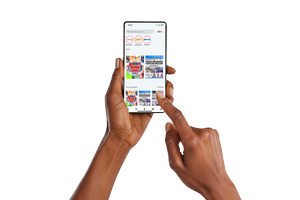Toy story: A look at playtime around the world

Abby (left) and Failunah play with their toys at Mabibo in Dar es Salaam. PHOTO | VENANCE NESTORY
What you need to know:
Growing up in the village in the 1990’s, we used to have a few options for toys to play with, unlike our children today. Those days, we, the children made our own toys and dolls. Today we buy toys for our children.
Times have really changed. The kind of life we used to live as children is very different from that of our offsprings today. So are the games that we used to play.
Growing up in the village in the 1990’s, we used to have a few options for toys to play with, unlike our children today. Those days, we, the children made our own toys and dolls. Today we buy toys for our children.
I remember to have made several toys and dolls. I used to make dolls and toys from pieces of cloth or clay. We used to collect the pieces of cloth from tailors. Then we would play ‘family games’ where one would become the mother and someone else would play father and our dolls would be our children.
Like other boys, my brother used to make car toys using banana leaves, wood, clay and wires. Boys also used to play with old car or bicycle tyres, kites made from paper and catapults among others.
We were creative weren’t we? Our children today can make none of what we used to make. Everything is ready-made for them. Today’s children, especially those who live in cities and towns and whose parents can afford to buy the toys play with more sophisticated electronic toys, games, play stations, and the list is long.
These toys have made today’s children curious and imaginative. A one-year-old child today can make a phone call, send SMS, swipe their parents’ smart phones and do a lot of navigation. Some of the things they can do with these phones, their parents can’t do.
Prized possessions
Italian photographer Gabriele Galimberti spent over a year visiting more than 50 countries around the world and documenting the prized possessions of young boys and girls.
From Texas to India, Malawi to China and Iceland to Morocco, Mr Galimberti recorded the spontaneous and natural joy that unites children despite their diverse backgrounds.
In Bububu Zanzibar, Tanzania, the Italian photographer met Arafa and Aisha who are twins and photographed them with their favourite toys.
“At their age, they are pretty all much the same,” is his conclusion after 18 months working on the project. “They just want to play.”
But how they play can reveal a lot. “The richest children were more possessive. At the beginning, they wouldn’t want me to touch their toys, and I would need more time before they would let me play with them,” says the Italian, who would often join in with a child’s games before arranging the toys and taking the photograph. “In poor countries, it was much easier. Even if they only had two or three toys, they didn’t really care. In Africa, the kids would mostly play with their friends outside.”
Yet even children worlds apart share similarities when it comes to the function their toys serve. Galimberti talks about meeting a six-year-old boy in Texas and a four-year-old girl in Malawi who both maintained their plastic dinosaurs would protect them from the dangers they believed waited for them at night – from kidnappers and poisonous animals respectively.
More common was how the toys reflected the world each child was born into: so the boy from an affluent Beijing family loves monopoly, because he likes the idea of building houses and hotels, while the boy from rural Mexico loves trucks, because he sees them rumbling through his village to the nearby sugar plantation every day.
Ultimately, the toys on display reveal the hopes and ambitions of the people who bought them in the first place. “Doing this, I learnt more about the parents than I did about the kids,” says Galimberti.
There was the Latvian mother who drove a taxi for a living, and who showered her son with miniature cars; the Italian farmer whose daughter proudly displayed her plastic rakes, hoes and spades.
Parents from the Middle East and Asia, he found, would push their children to be photographed even if they were initially nervous or upset, while South American parents were “really relaxed, and said I could do whatever I wanted as long as their child didn’t mind”.
With the exception of computer games, he noticed that toys haven’t really changed over the past three decades or so.
And there is something reassuring about that. “I’d often find the kind of toys I used to have,” he says. “It was nice to go back to my childhood somehow.”
Email: [email protected]




